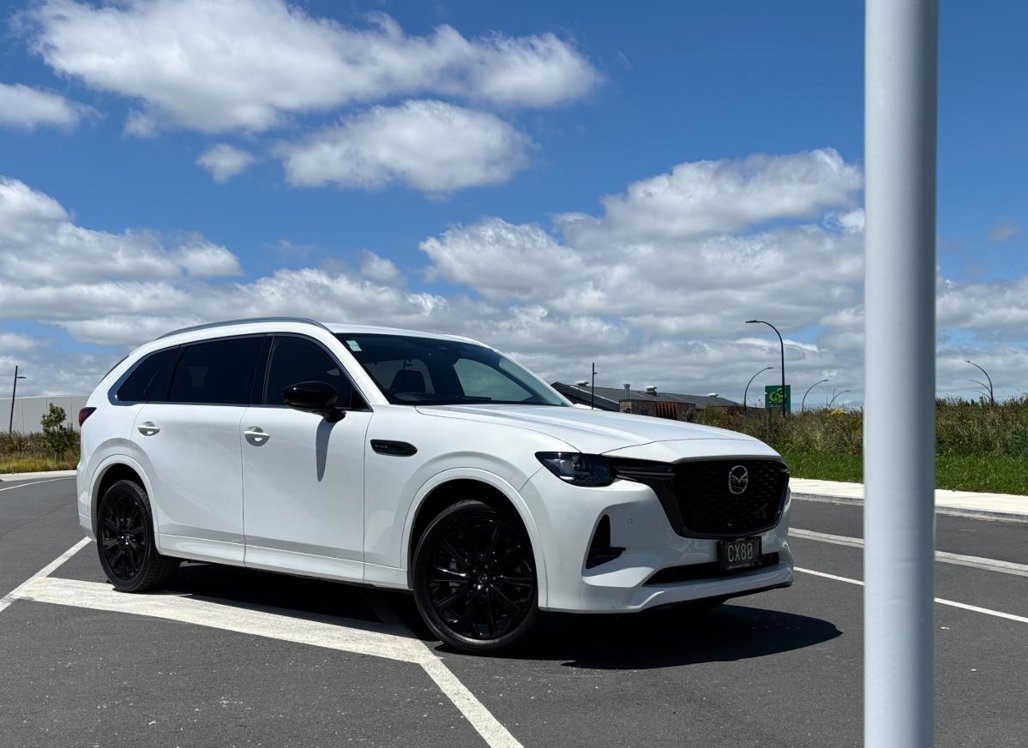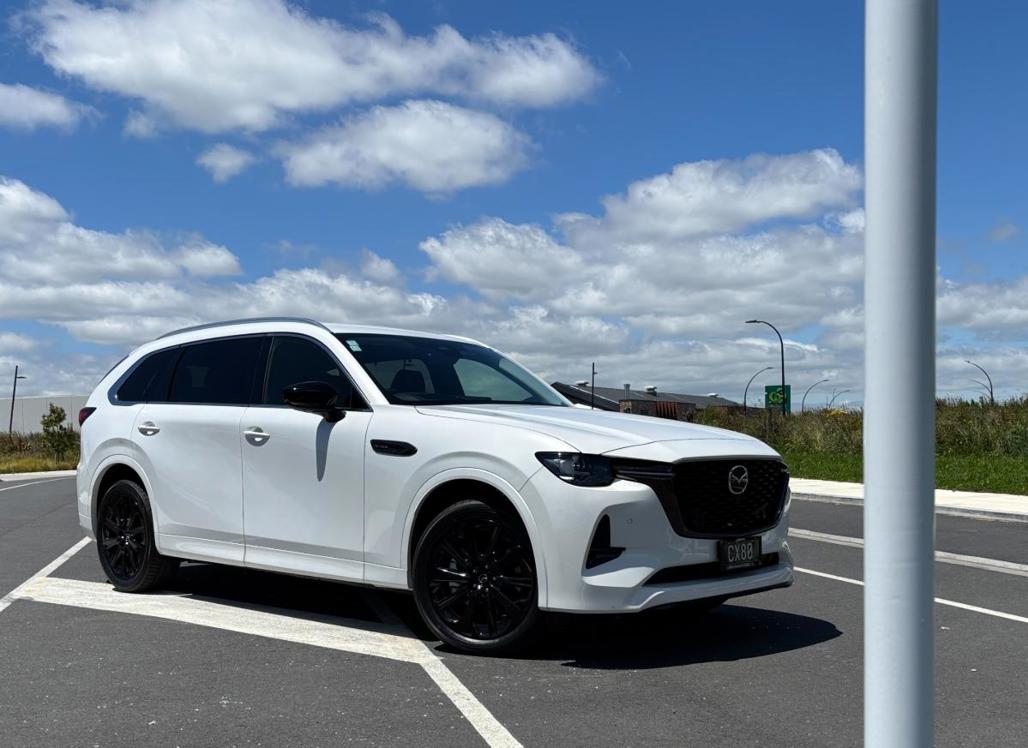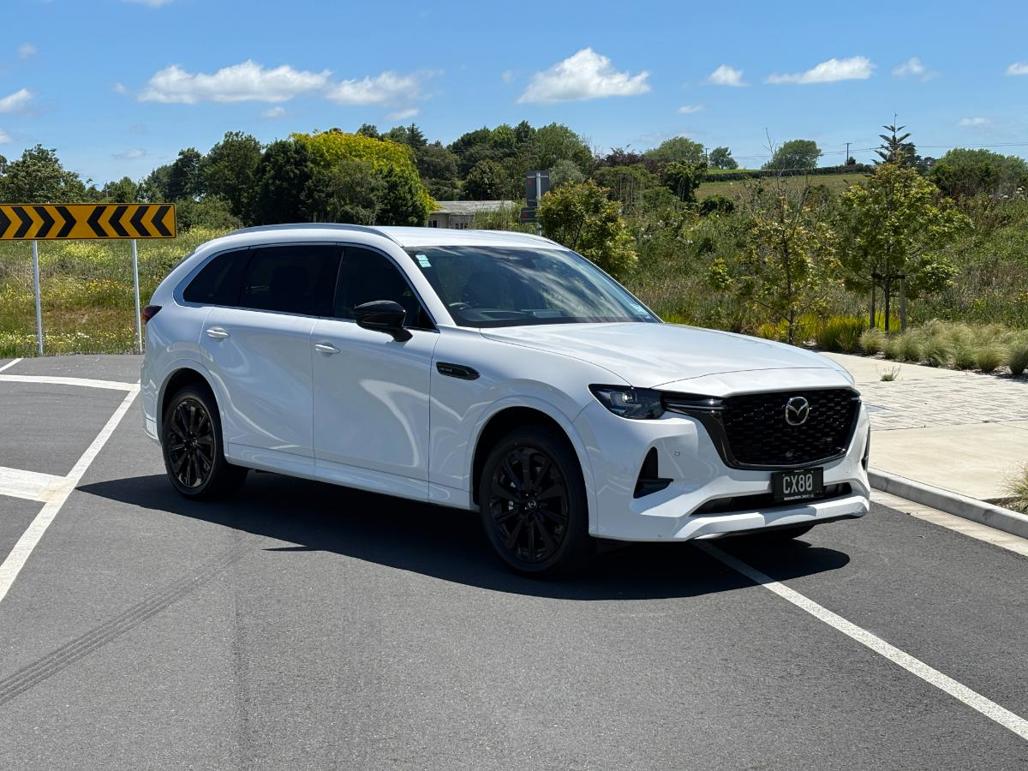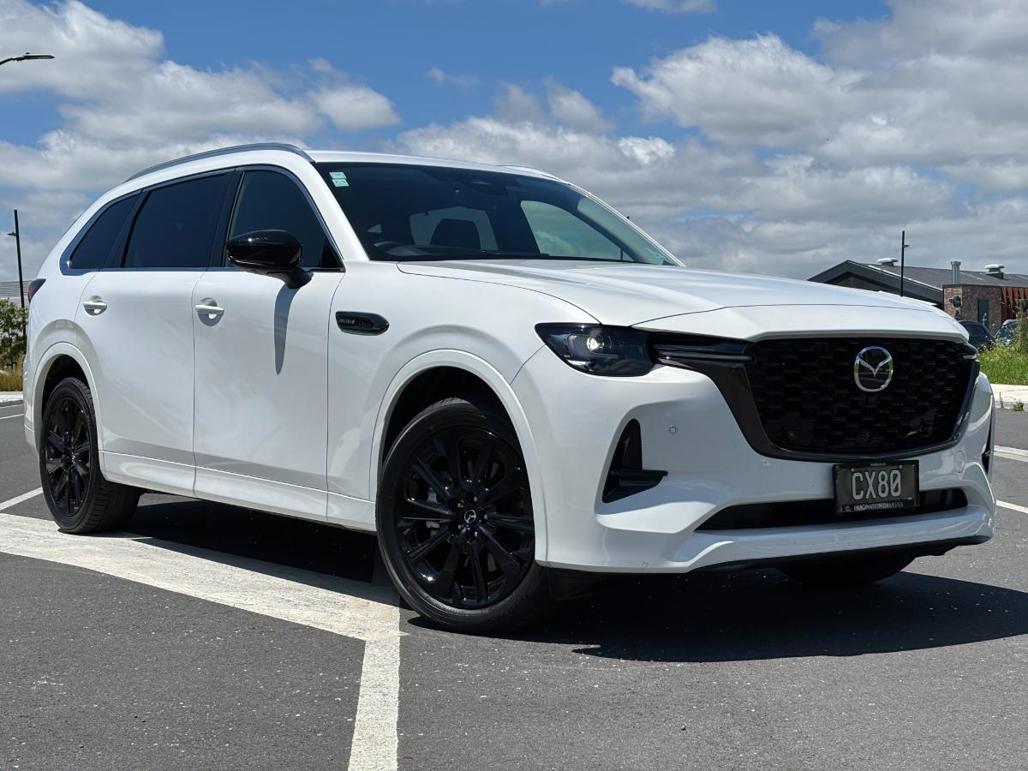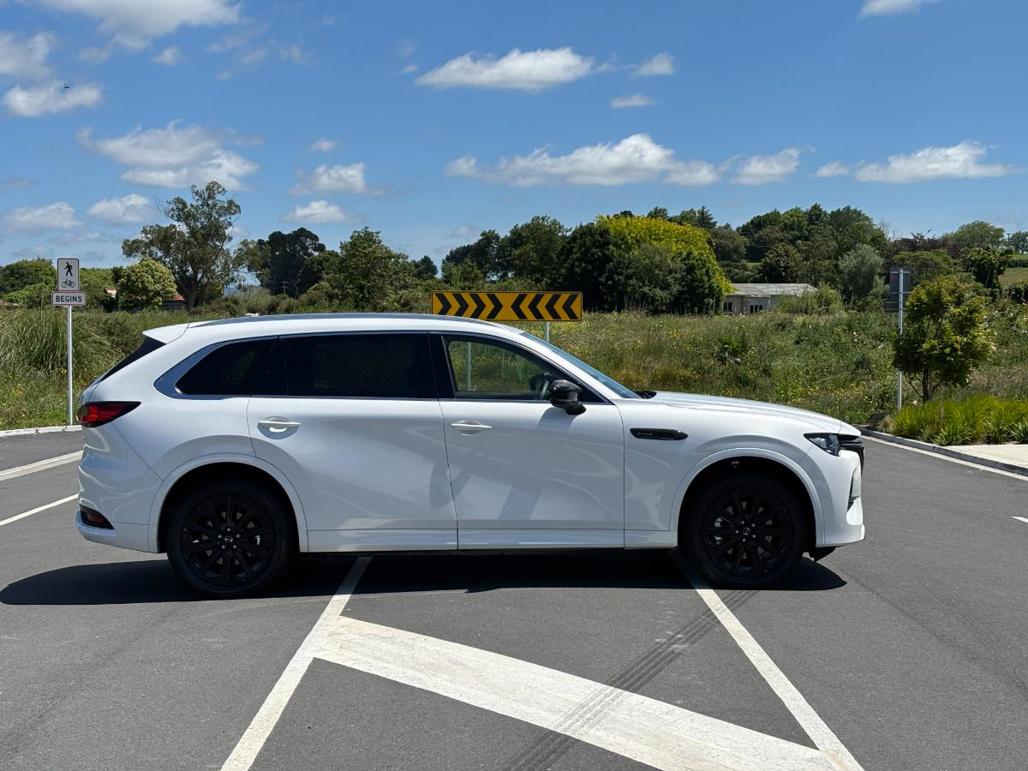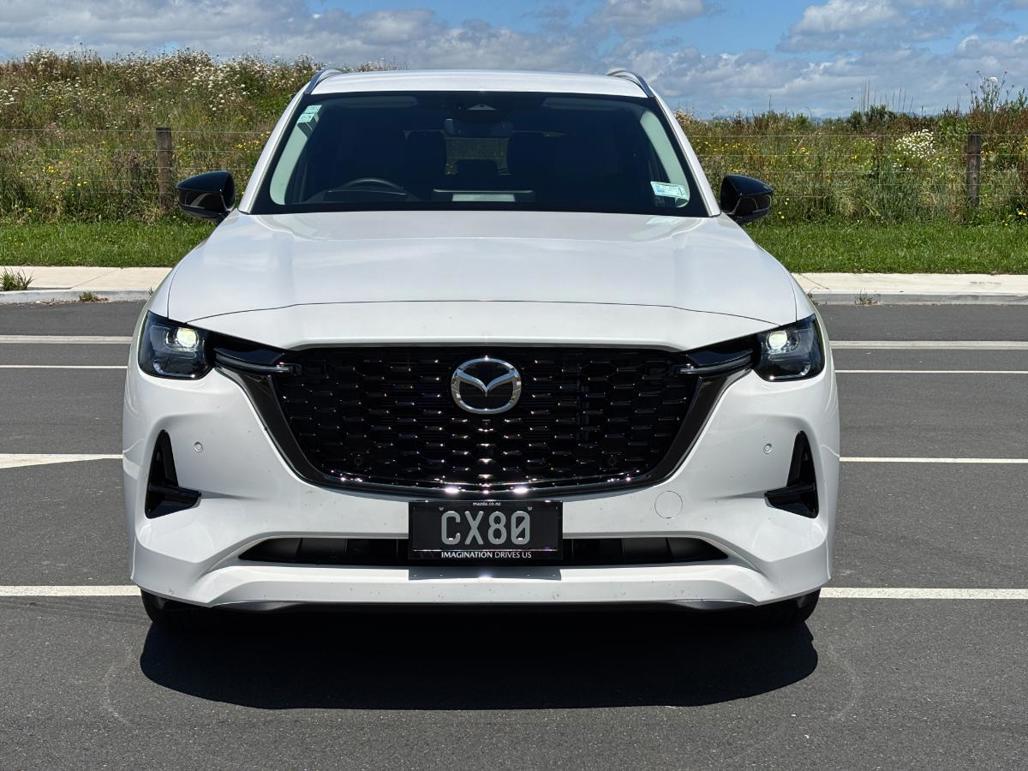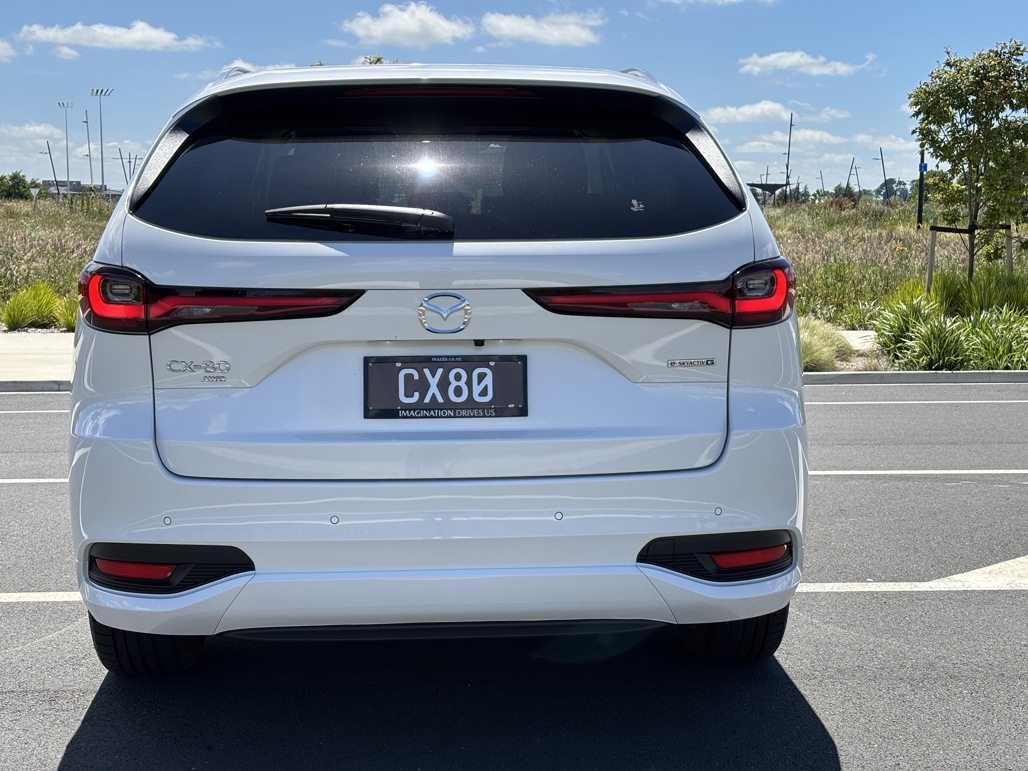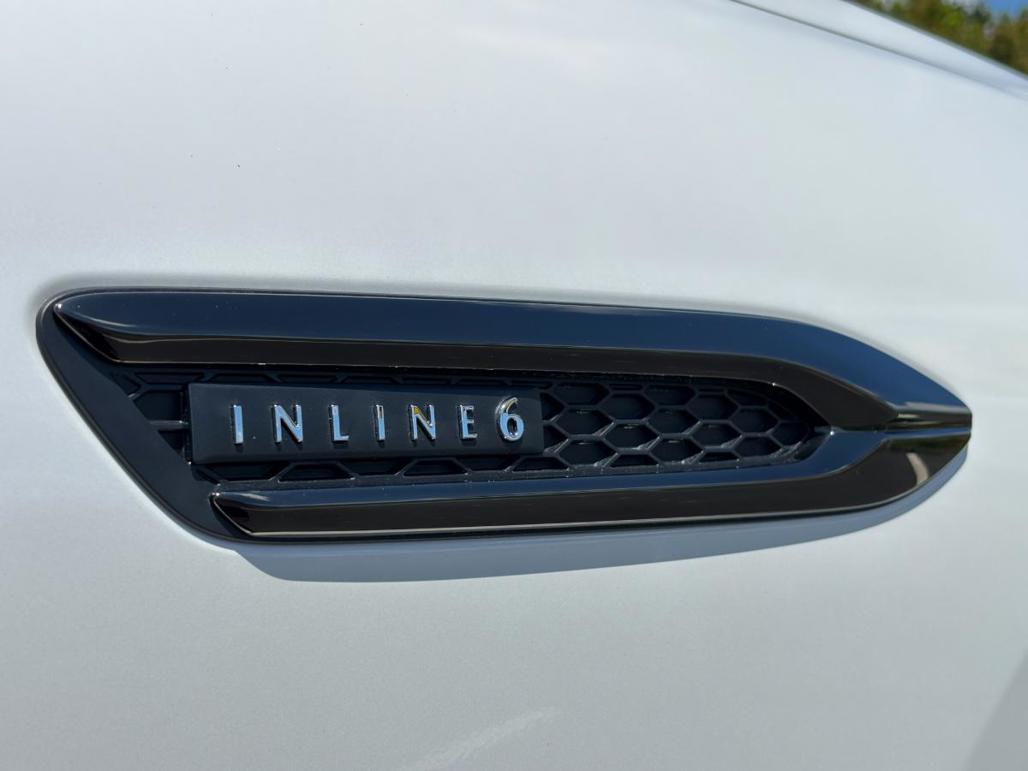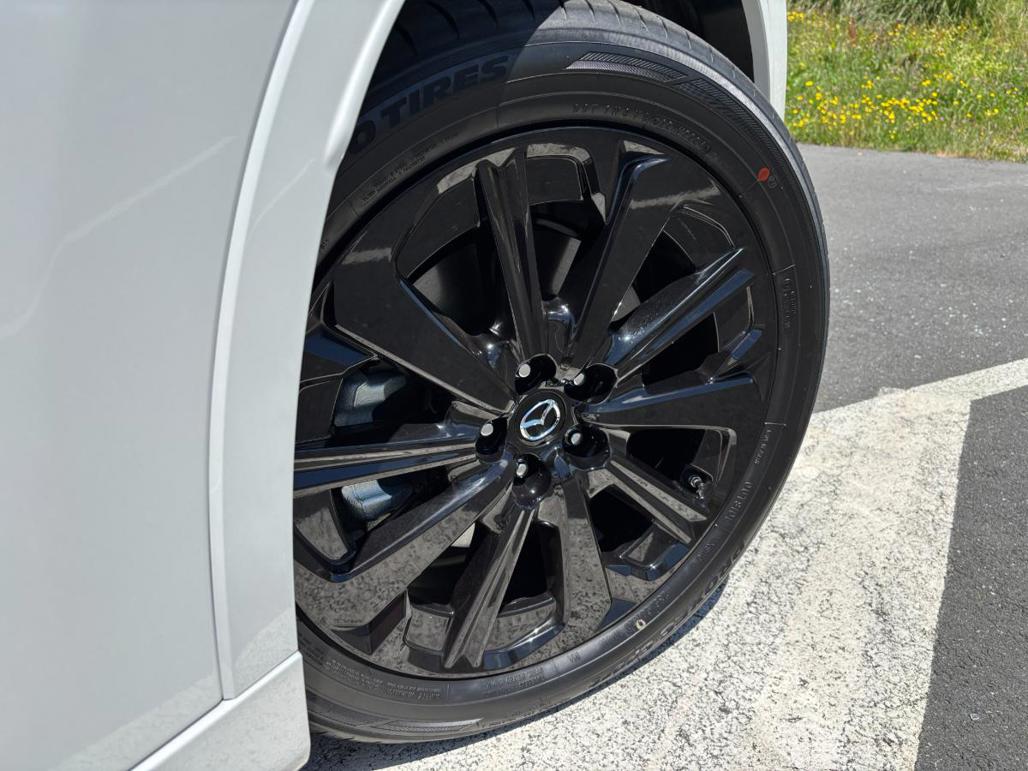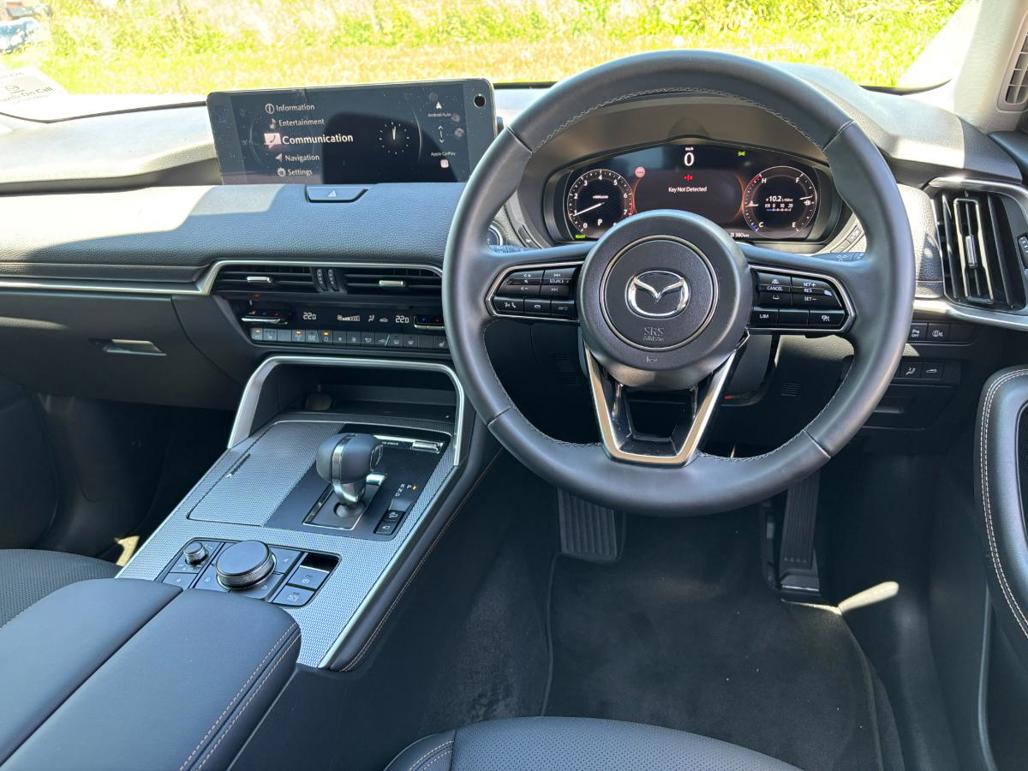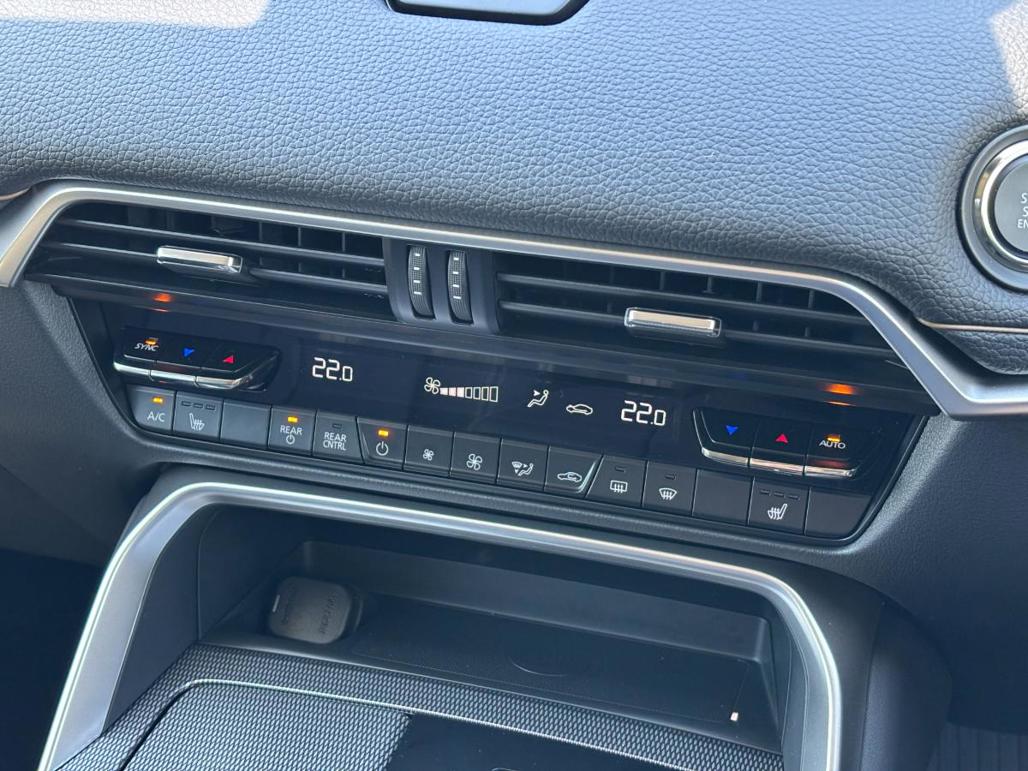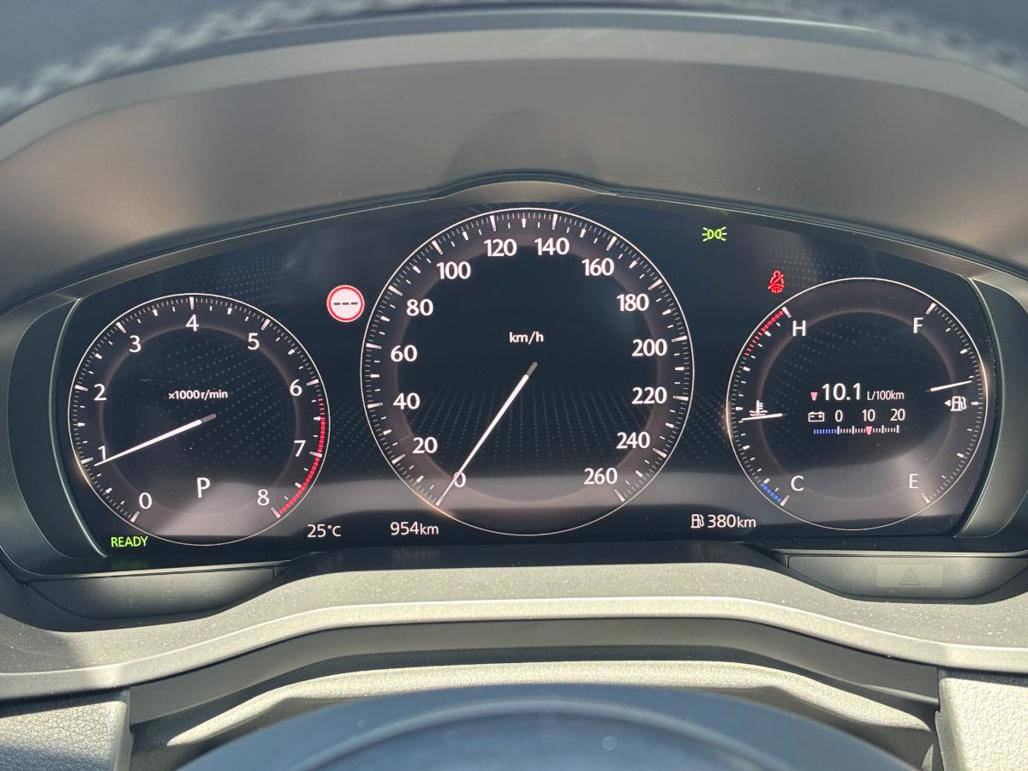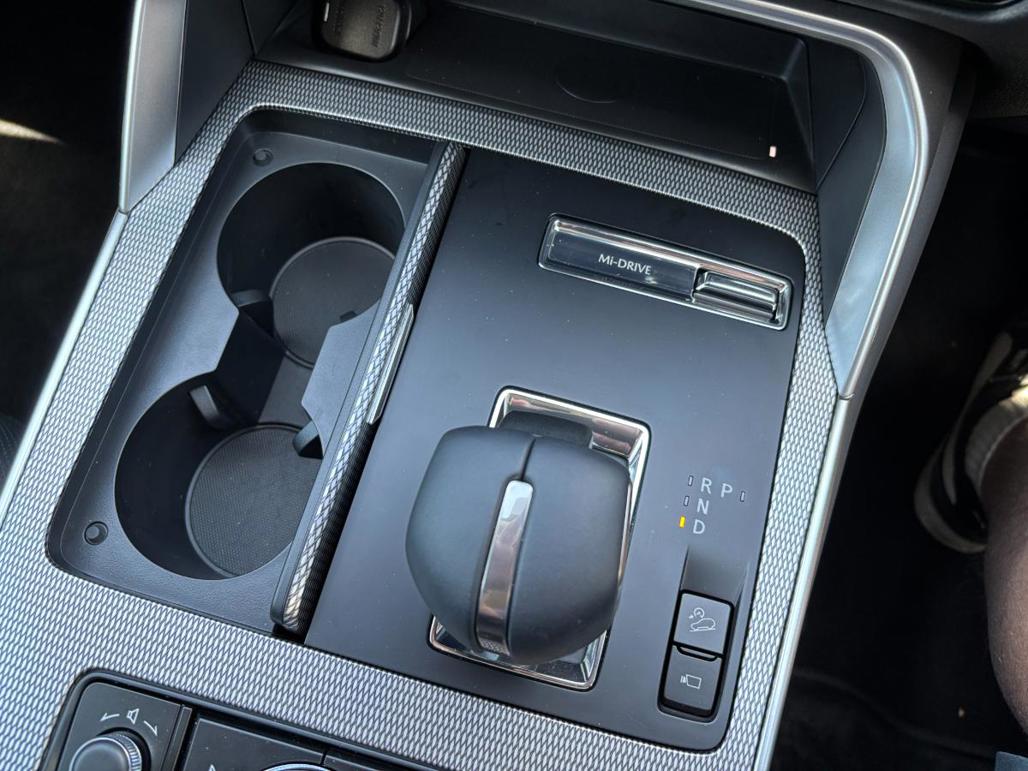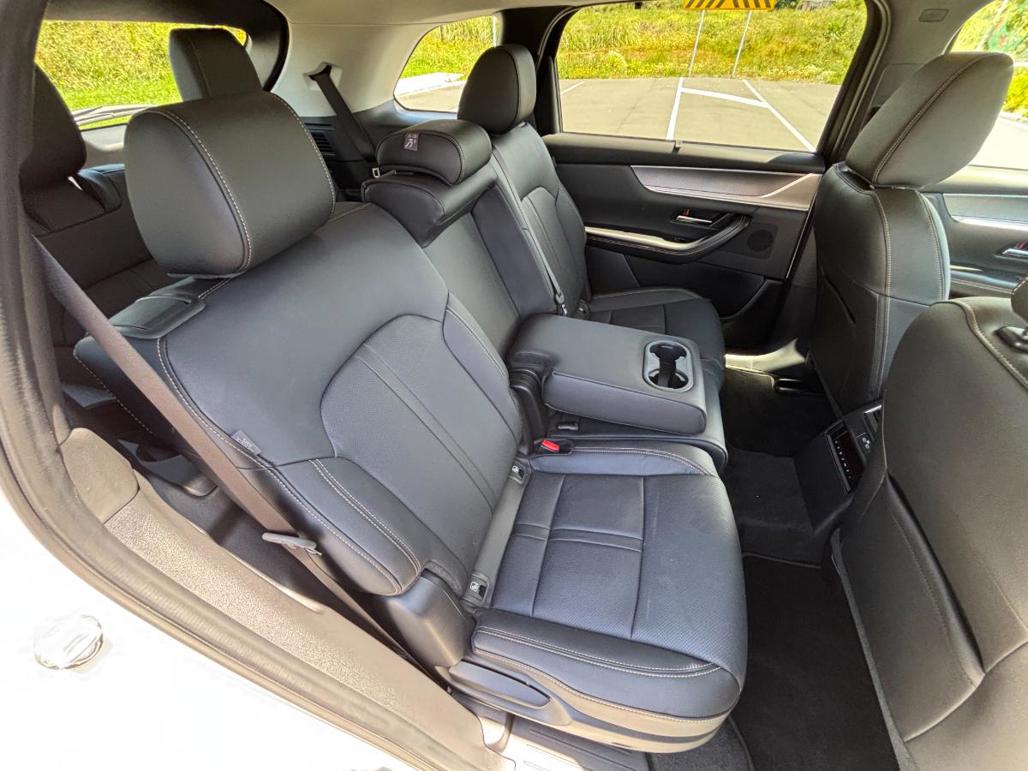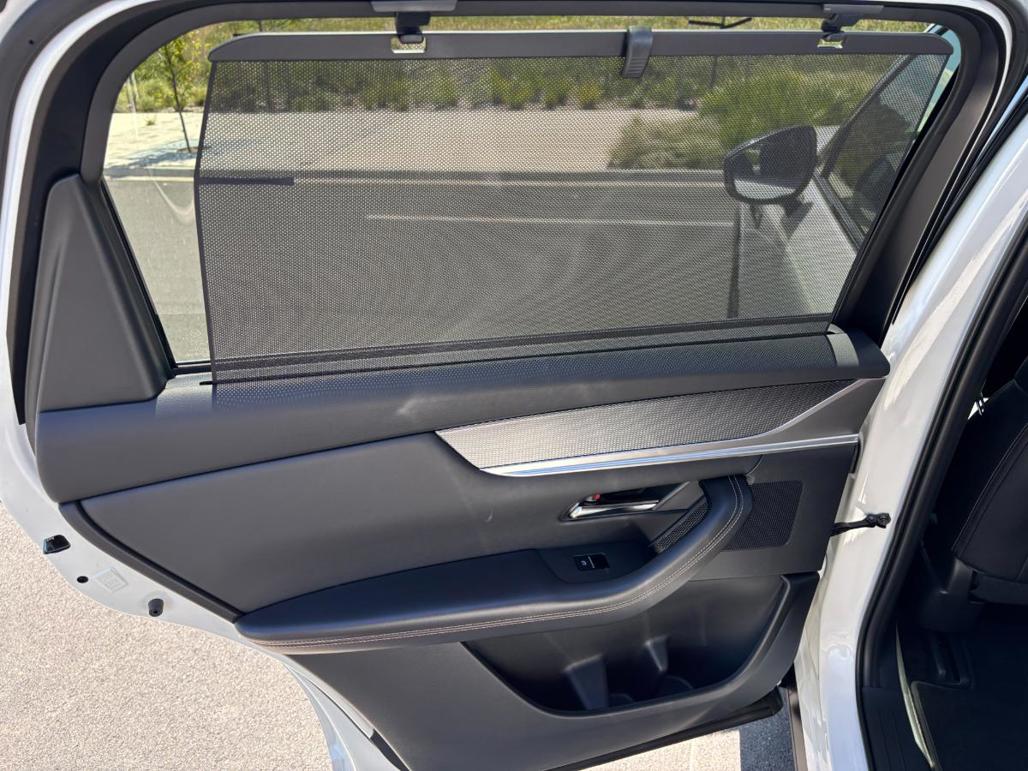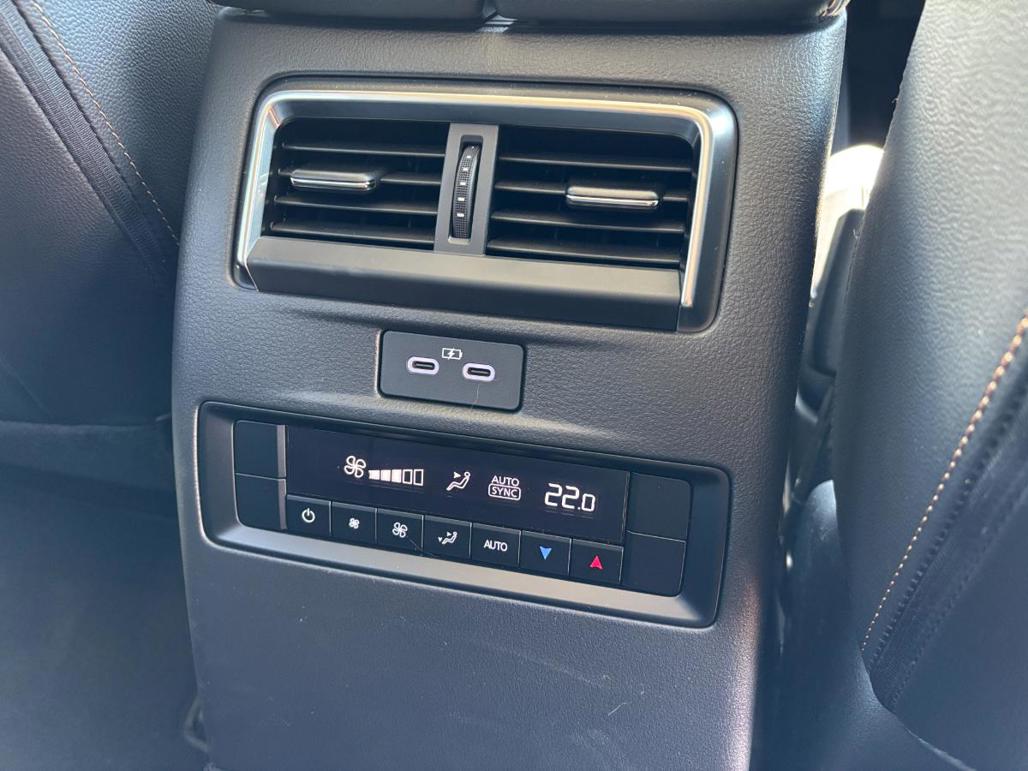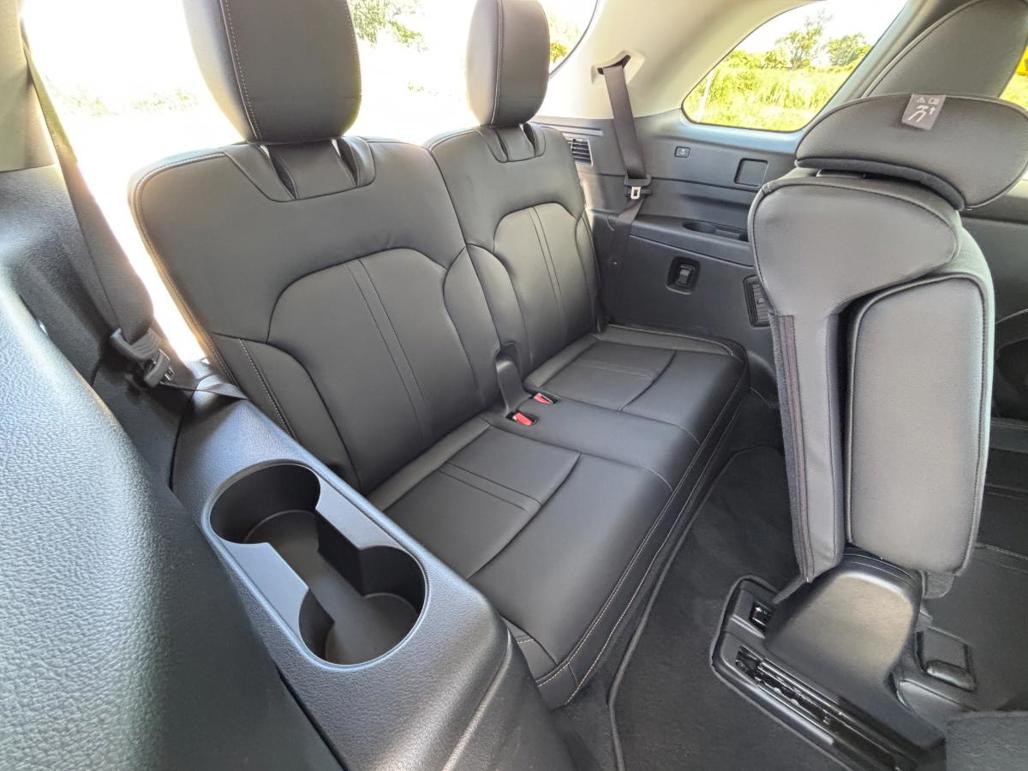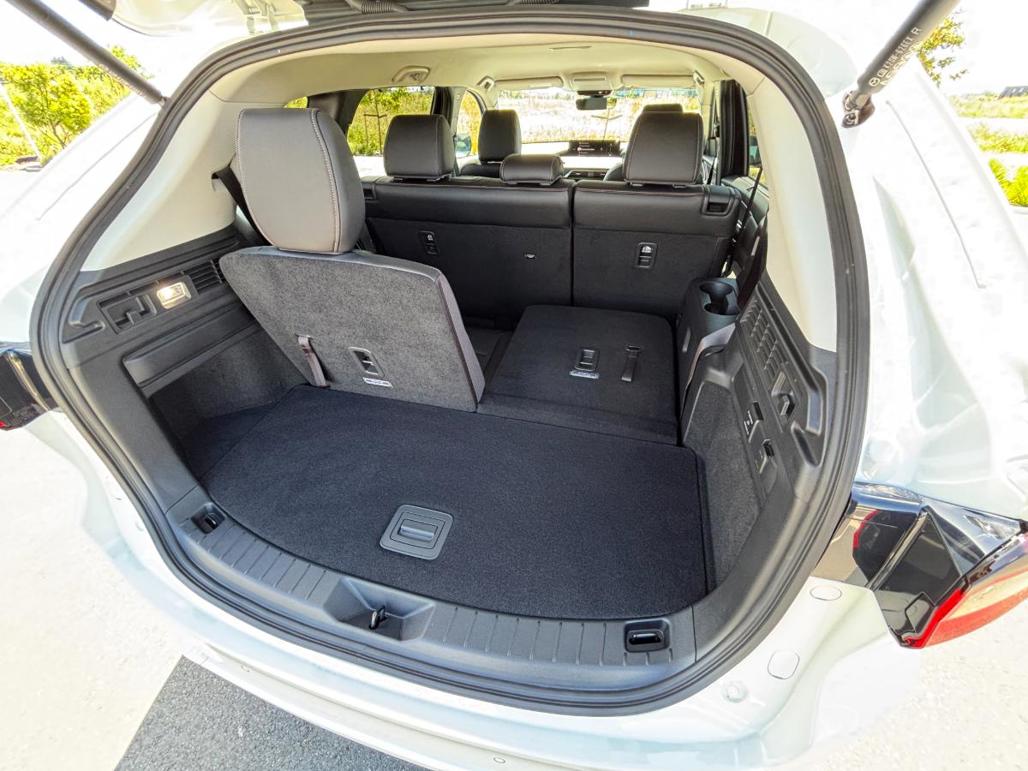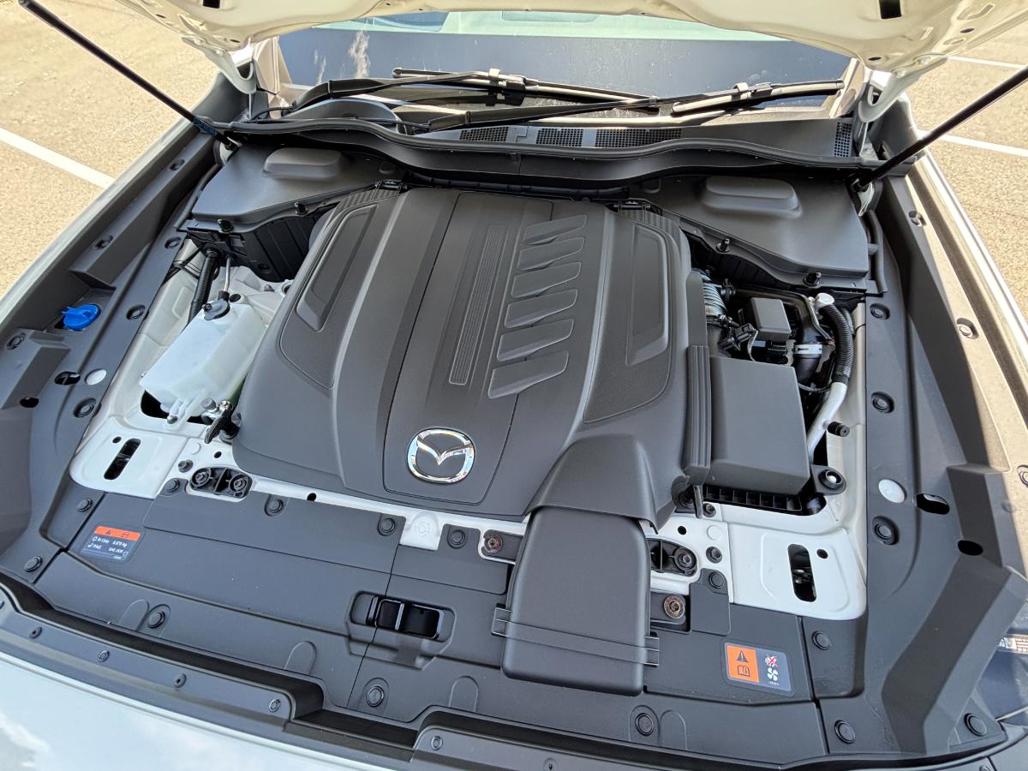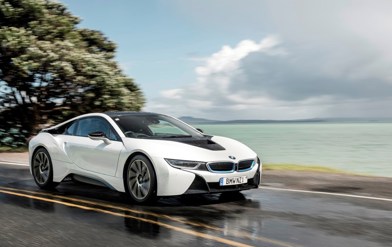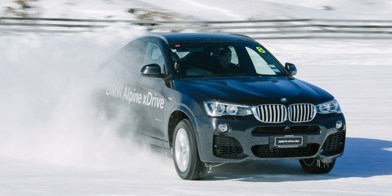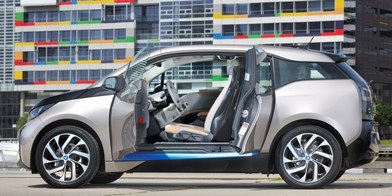This, you could say, was the Mazda SUV we’d been waiting for, the six-cylinder CX-80. Completing the evolution from the previous CX-8 and CX-9 models to the new CX series, we’ve previously driven the 2.5-litre PHEV, both the CX-60 and CX-90, and now the complementing CX-80 has arrived with a 3.3-litre inline six-cylinder, mild hybrid, all-wheel drive and seven seats.
So, for a moment of number fun, from the CX-9 and the 8 comes the new seven-seater with a six-cylinder. (Yeh, OK, maybe it wasn't fun...).

Early-2023, we visited Japan to get a preview of the new large architecture, which was the foundation of the new CX-line of Mazda CX-series SUVs. With a rear-drive ‘platform’, though still all-wheel drive for now, the CX-80 mixes two worlds, offering the large platform and seven-seats, plus a six-cylinder turbo petrol engine for broad mass-market appeal.
The new engine is the heart of it all, a sweet turbo six with a thrumming soundtrack that spins to 6000rpm through an eight-speed automatic, with the economy assistance of a mild hybrid package. Very mild. There are no major clues to its mild hybrid-ness, just a hint when its tacho drops to zero while driving, most often during deceleration when its engine stop mode kicks in – it’s there to aid the engine, rather than offer an EV-only driving.
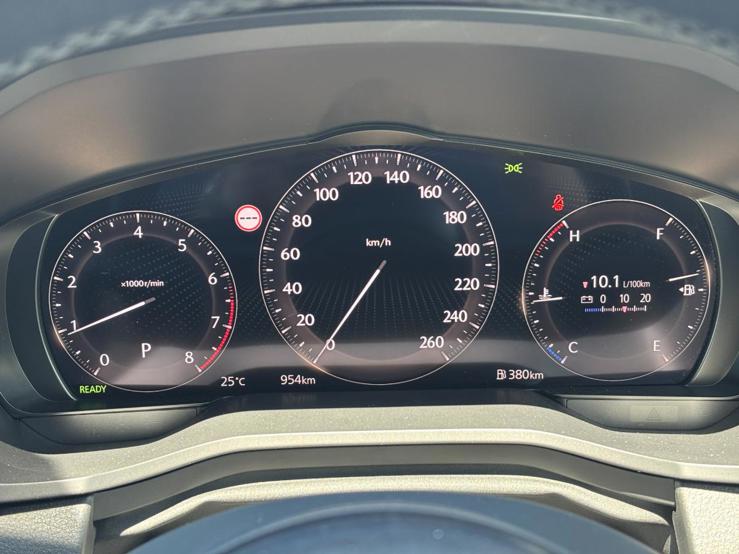
And that all-important fuel use figure hovers around 9.5-10l/100km with normal driving, mixing motorways and suburbs, a little more than 8.4l/100km claimed by Mazda, even leaving the stationary engine-stop feature to do its thing. It does, however, only require 91-octane fuel, rather than its 2.5-litre PHEV sibling that 95RON, while the large 74-litre fuel tank helps offset the range, which is still solid given its size and 2.1 tonnes.
The gearbox is sweet when on the move, almost completely free of the mild clunks low-speed clunks we experienced in the CX-60 range, maybe just 1-2 in the week we drove it, and slick and quick through the gears to the point where it’s hardly ever thought about, beyond the odd shift pattern that slides right to left from Park, to the fore-aft drive-neutral-reverse gate.

Looking quite like its CX-60 and CX-90 siblings, the garnish on the front guard is the identifier, and quite stylish in its range of colours, ours being the Rhodium White Metallic with contrasting black alloys.

It’s inside where you really appreciate the premium feel of a Mazda. Traditionally Mazda-black, and only black, it’s very well-equipped for its $75k price, and leather abounds on the touch-points, such as the 10-way adjustable/memory seats, very fine leather steering wheel, kitted out with all the usual high-end gear in all the right places such as wireless charging and CarPlay/Android, a twin-cupholder that more often becomes basic storage, plus a large centre console with flip-up sides and a pair of USB-C ports for the usual wired/charging phone connections.

The electronic dash is clean and neat, white-on-black, though does lose its central speedo when the radar cruise control is activated. The 12.3in touchscreen offers both full touch screen, and because it’s a slight stretch from the driver’s seat, Mazda’s handy rotary commander, which offers two ways to navigate the menus. Having the two methods is a great way to be able to easily or quickly negotiate functions, whether stationary or moving, quick and easy.
Like Mazdas before it, the interior may be black, but its form and function are outstanding, mixing style and practicality and setting a very high standard. Clear buttons, logical controls, it’s all very user-friendly inside, and the vision all-around is very good, despite its size.

The second row has its own climate control, leather, and extras like side sin blinds, triple cup-holders in the doors, and fold-down centre armrest with two more cupholders. It also has a one-touch button on the seat’s side to easily access the third row, one press releasing and (manually) sliding the bench and flipping the backrest forward and opening up a large access area to the rear.

The door opening almost 90 degrees makes access to the third row quite good, and once in, there’s good room, without being spacious. Head, length and shoulder room can accommodate a six-footer, while a USB-C port each side and a face vent should keep back passengers quiet and cool – though the Isofix mounting points only run to the second row.

Even the cargo area is generous, via the power tailgate: with the third row raised, there’s still 258 litres, while with all seats lowered, there’s up to 1971 litres, including underseat storage; 2.5 tonne towing and a decent, if about on-par turning circle of 11.6 metres makes it very liveable. Plus there’s also a 220v/150W power outlet in the rear.

Owfastisit? Though Mazda doesn’t offer an official 0-100km/h time in its brochure, it does get up and boogie with the best of them, and for something over 2 tonne and petrol powered, that sweet six does a great job of moving the mail, and our RaceBox timer showed up two almost identical times of 6.9 seconds. Speed isn’t a problem.

Even the ride quality is super impressive for 20in wheels and low-profile tyres, and we didn’t experience any moments of anything but comfort and cosseting - though Mazda is known to err on the side of sporting, we used in in its typical suburban school duties and didn’t have a single complaint.

Parking is made a lot easier via the 360 degree camera with views in all the right places, and there’s even facial recognition that sets seat and mirror positioning – though it can sometimes be getting close to naggy for the driver assist alerts, though still perfectly fine.

With rivals like Hyundai Santa Fe starting at $85k, Sorento ranging between $63k and $95k, and Toyota Highlander ranging between $61-$81k, the CX-80 SP sits in a very sweet, competitive spot – let the battle commence.
BREAK IT DOWN
Mazda CX-80 SP
ENGINE: 3.3-litre inline petrol six-cylinder turbo, MHEV
POWER: 209kW/450Nm
GEARBOX: 8-seed automatic
0-100KM/H: 6.9 secs (tested)
ECONOMY: 8.4l/100km
WEIGHT: 2084kg
PRICE: $74,990

